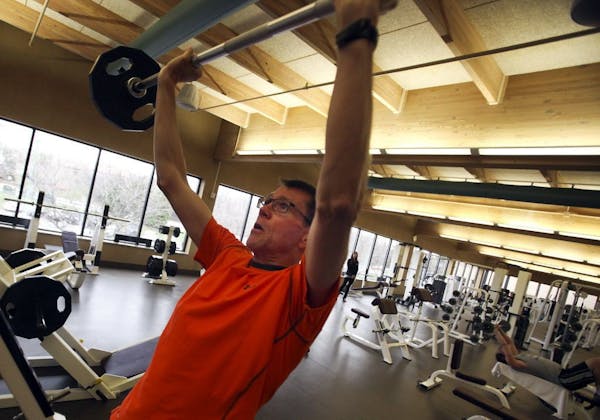Twenty years ago, Bahram Akradi decided that working out should be more like going to a country club than to a dingy, sweat-soaked gym.
He stuck to that vision through the challenge of the Great Recession and, on Monday, a group of investors offered $4 billion for it.
The result: Chanhassen-based Life Time Fitness, now one of the nation's largest operators of fitness centers with more than $1 billion in annual revenue, will go private again, ending 11 years as publicly traded firm on the New York Stock Exchange.
The deal won't affect the operations of the company's 114 fitness centers, executives said, including the 23 locations in the Twin Cities, its biggest market.
But it will remove pressure on the company to spin off its real estate assets as some activist shareholders had been pressing the company to do last year.
Akradi is joining the buyers, Leonard Green & Partners, TPG and LNK Partners, by putting some of his own money into the transaction and will remain president and chief executive. "We are going to continue to build as many good sites, good locations as we can find," he said.
Akradi founded the company in 1992 with its first location in Brooklyn Park. Over the years, he differentiated Life Time by offering more of a country club experience that includes tennis and racquetball courts, spa services, aquatic parks and free towels and locker service. And unlike much of the fitness industry at the time, he didn't lock members into long-term contracts, offering instead the flexibility of month-to-month options.
"I had worked in clubs," he said in a 2003 Star Tribune profile. "They were dingy, smelly places. They were like torture chambers. And they forced you into contracts. It wasn't built from a customer perspective."
Akradi envisioned clubs that played a bigger role in the lives of members, particularly suburban families. All offer on-site day care along with programs and camps for children.
"They serve as that kind of third place in your life kind of experience" outside of work and home, said Sean Naughton, an analyst with Piper Jaffray in Minneapolis.
Memberships don't come cheap. While some more bare-bones gyms offer memberships for $20 a month, Life Time monthly dues range from $45 to $160 for individuals and $75 to $340 for families.
Naughton noted that Life Time isn't really in direct competition with some lower-priced operators such as 24 Hour Fitness, Chanhassen-based Snap Fitness or Hastings-based Anytime Fitness. Boutique fitness concepts that also charge higher fees, such as CrossFit and CorePower Yoga, have posed more of a challenge, he said.
With the improving economy and job market, Life Time Fitness is well poised for growth. About half its locations are centered in just four states: Minnesota, Texas, Illinois and Michigan. That leaves lots of places to go, Naughton said.
Akradi, a native of Iran, got involved with the health club industry while he was an electrical engineering student at the University of Colorado. He started out in sales with Nautilus Fitness Center and later became part owner of Minnesota-based U.S. Swim and Fitness. It was the second-largest health club chain in the Twin Cities when Akradi and his partners sold it to Bally Total Fitness in 1986.
He left the company a couple of years later to develop Life Time. In 2004, he took the company public at a valuation of roughly $600 million.
The company was on a roll for a while, each year opening six to 10 supersized centers that average about 114,000 square feet.
But the Great Recession forced the company to slam on the brakes as it began to lose members quickly. In 2009, it pared back its plans to open more than a dozen locations that year to just three.
"It's like biking into a head wind rather than having the wind at your back," Akradi said at the time.
Many other fitness chains suffered then, too. Bally filed for bankruptcy protection twice between 2007 and 2008.
But Life Time managed to weather the storm by engaging more with members and lowering the price of some of its services such as basketball leagues and summer camps.
It continued to open just three new centers a year until last year when it ramped up to six, including its first locations in California and Iowa. This year, it will open six centers in Sacramento, Toronto, Boston, Long Island and the Philadelphia area. It opened one earlier this month in Raleigh, N.C.
Since the recession, the company has also been diversifying its business by expanding into running more athletic events such as triathlons as well as working with corporations to conduct health and fitness assessments outside of its gyms.
Staff writer Patrick Kennedy contributed to this report.
Kavita Kumar • 612-673-4113
Searching for Snoopy: What happened to all the 'Peanuts' statues in St. Paul?
North Oaks withdraws request for density exemption from Met Council

Fall or spring, it's Rochester Mayo's year in prep tennis

Minneapolis reaches $150k settlement with eyewitness of George Floyd's murder

